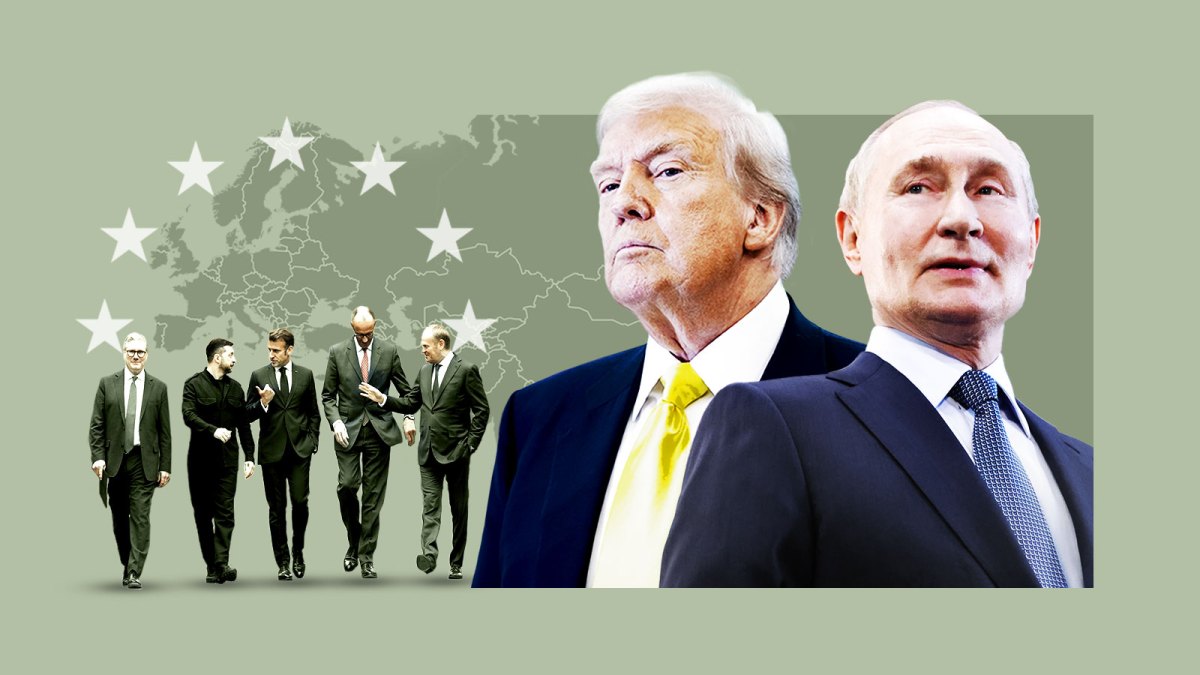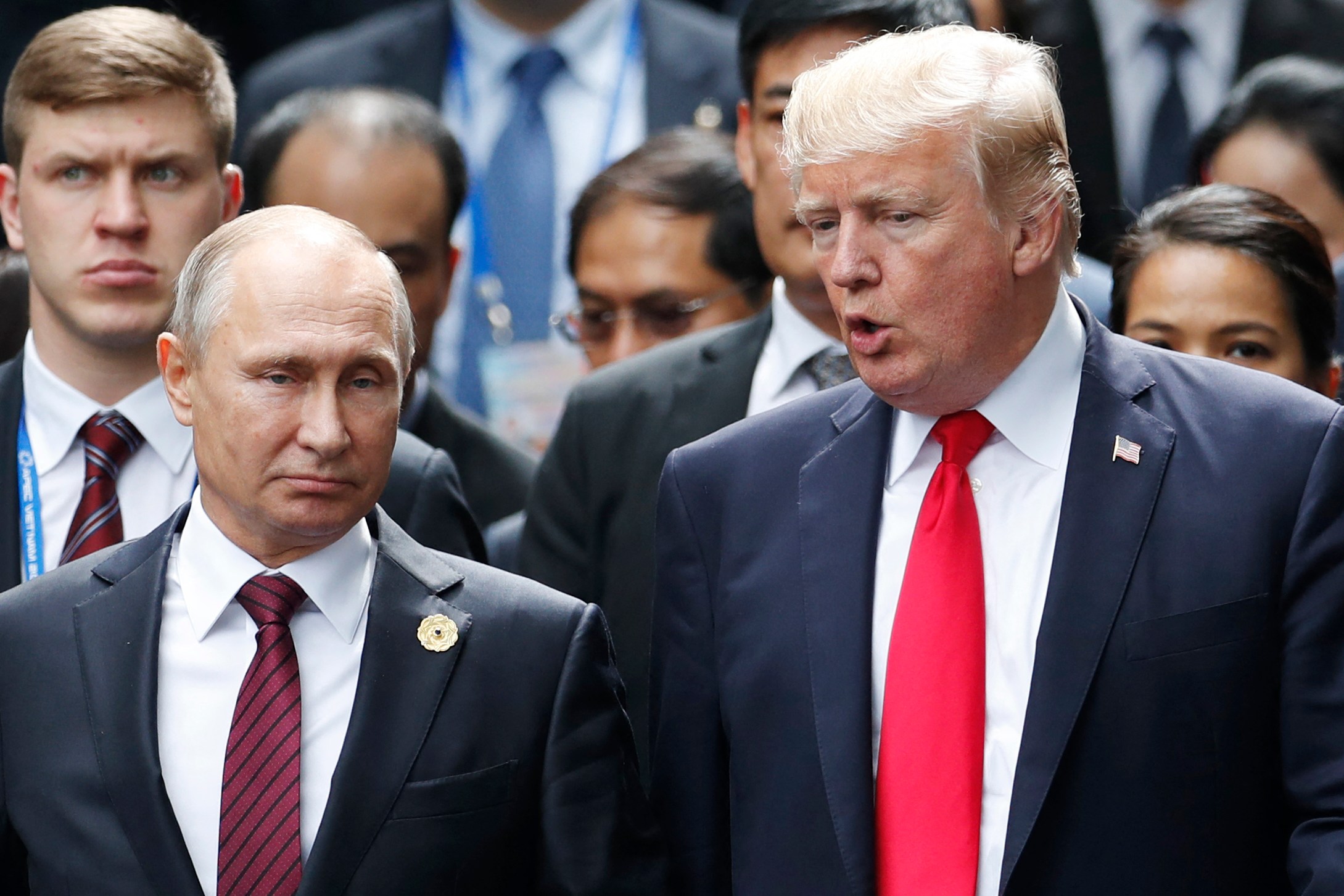Europe needs to “step up and take a bigger role” in funding Ukraine in its war against Russia, JD Vance, the US vice-president, said on Sunday.
Speaking to Fox News, he claimed Americans were “sick” of spending their tax dollars abroad and Washington was “done funding” Kyiv.
“If you care so much about this conflict, you should be willing to play a more direct and a more substantial way in funding this war yourself,” he said.
He spoke as European leaders again scrambled to build a united defence behind Ukraine, after President Trump suggested he may cut a deal with President Putin that could mean Ukraine has to concede territory.
It is clear, however, that even if it remains unwavering in its diplomatic stance, Europe lacks the strength to back Kyiv in negotiating favourable terms in a future peace agreement or enforcing a ceasefire.
The so-called “coalition of the willing” — a multinational force led by the UK and France intended to support Ukraine and potentially monitor a ceasefire — looks highly unlikely to meet Sir Keir Starmer’s original hopes of 64,000 troops on the ground.
The Kremlin has also said it will not accept western troops in Ukraine, warning that their presence could trigger a new world war. Even if Putin were to agree, European defence ministers have said there is “no chance” they could reach the 10,000 troops floated by the UK. Even 25,000 as a joint effort would “be a push”, The Times reported in April.
“Russia has 800,000 [troops],” Dovile Sakaliene, Lithuania’s defence minister, told European counterparts. “If we can’t even raise 64,000 that doesn’t look weak — it is weak.”
It falls far short of the 200,000 troops that President Zelensky estimated in January were needed to credibly enforce peace across Ukraine’s extensive front line and to prevent a new Russian attack after any ceasefire deal. Experts put the figure at closer to 600,000.
The group consists largely of European and Commonwealth countries.
So far, the UK and France are the only countries to have committed a specific number of troops. Finland is reportedly concerned that any deployment would “dilute” its own border defences, while Poland, Spain and Italy have made clear they will not commit any soldiers. Estonia has said it may only be willing to send a company-sized combat unit of ground troops.
Proposals have so far been hampered by shortages of manpower, political reluctance and logistical hurdles around the rules of engagement should Russia attack.
Financially, Europe overtook the US as the biggest supplier of aid to Ukraine in June, with about €72 billion in military aid compared with the US’s €65 billion, according to the Kiel Institute’s Ukraine Support Tracker.
The US has supplied the most sophisticated and lethal equipment, however, including advanced air-defence systems and precision munitions. Much of Europe’s aid finances the purchase of US-made weapons, underscoring its dependence on the country.
Zelensky said in January that about 40 per cent of Ukraine’s weapons came from the US, about 33 per cent were produced domestically and less than 30 per cent came from Europe.
Russia relies largely on its own resources, bolstered by partnerships with China and Iran. North Korea has also supplied between nine and 12 million artillery shells and rockets since 2023. Pyongyang allocates nearly 16 per cent of its government budget to defence, a proportion unmatched by any European state.
Last year, EU members spent €326 billion on defence, about 1.9 per cent of GDP — a 30 per cent rise since 2021 — but the US spent nearly $1 trillion, or 3.4 per cent of GDP.
Putin and Trump’s relationship has soured since the US president’s first term
JORGE SILVA/AFP VIA GETTY IMAGES
To close the gap, the EU launched an €800 billion readiness plan aiming to modernise and integrate military capabilities. But progress is slow, hindered by fragmented industries, political divisions and lack of a shared strategy.
The EU has imposed 14 rounds of economic sanctions on Russia since 2022, freezing more than €200 billion of Russian central bank assets and cutting energy imports. But Russia has adapted by deepening trade ties with China, India and other non-western partners, while Trump’s promise to impose crippling secondary tariffs on buyers of Russian oil have largely failed to materialise.
Europe could offer incentives, such as unfreezing Russian assets, as bargaining chips in any settlement. However, that relies on Putin seeing negotiation as preferable to continued war, something that is far from certain.
• What’s up for grabs at the summit — and can Trump outsmart Putin?
Following an emergency summit on Saturday hosted by David Lammy, the foreign secretary, with Vance and senior European and Ukrainian officials, Kaja Kallas, the EU’s policy chief, said she planned to convene an extraordinary meeting of EU foreign ministers on Monday. “The US has the power to force Russia to negotiate seriously,” she said, and any deal “must have Ukraine and the EU included”.
Kallas framed the talks as a matter for not just Ukraine’s security, but the whole of Europe’s.
European diplomatic efforts are significant but, without military backing, risk being symbolic. The ability to uphold Ukraine’s territorial integrity depends on sustained US commitment of weapons, troops and political will.

